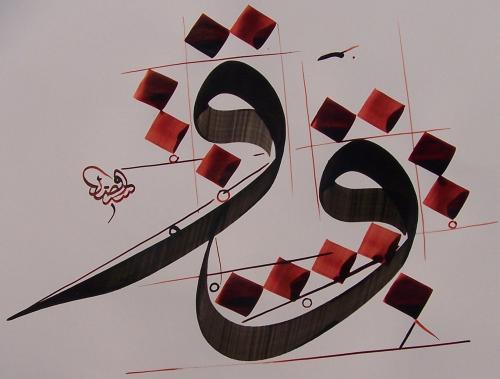Developing European / Western Islamic Architecture

Recently the biggest mosque in Germany opened in the city of Duisburg and has already become a symbol of successful integration. A beautiful mosque borrowing strictly from the Ottoman era, with its distinctive multi-dome and spiked minaret, the mosque is a clear reflection of the predominant Turkish Muslim community in Germany.
But this is where I also find that the Muslim communities in the west have on most occasions resorted to building Mosques in the style of their homelands. Be that in the North African (Moorish) style for a mosque in Paris or a very Indian sub-continental styled mosque in London, there seems to be a deliberate attempt to avoid modern architecture.
I am no expert on architecture, but I do know that traditional Islamic architecture embodies historical legacies, symbolism and magnificence that is unmatched in anything else I have seen. Every mosque from Morocco to Malaysia is built beautifully and somehow contains a spiritual atmosphere that is hard to replicate in modern architecture.
But stop and look closely you will find that almost in every country that Islam has spread to, the mosques have always borrowed something from the local architecture. Look at the Masjid al-Aqsa in Jerusalem or look at Chinese mosques in their distinctive Chinese styles. Wherever Muslims have gone they have adopted local cultural design and developed it into something they are comfortable with. Often this is evident in clothing, when Muslims often adjust local clothing styles to suit the Islamic codes of modesty
So why, when you have the opportunity to build a symbol of integration, build a mosque that is strictly designed in a ‘alien’ or ‘foreign’ style to that of the local native population? Would it not have been a better example to borrow from the long established and respected German architecture? Do we have to put our distinctive cultural styles on our local mosque as a deliberate distinction of our foreign identity? Is modern architecture so devoid of spirituality that it cannot ever match the great buildings of Muslim Spain or Isfahan?
The 20th century has seen German architecture be transported around the world. The clear lines of Bauhaus excerted a strong influence and moulded a new international style. I think it would be a very wrong to ignore western architectural achievements, especially that of Europe. At the same time I am not ignoring that there are some great examples of modern Islamic architecture, some notable ones are in the United States.
This is not imply that Islamic architecture has nothing to offer, far from it. The various Muslim architectural styles are a great example of borrowing, developing, innovating and ultimately exemplifying the sacred act of prayer. The mosque has always been a functional place, a multifunctional centre for the whole community, an aesthetic marvel and a physical magnet of the Muslim community. We should pride ourselves in making sure we do not just build a simple mosque, but if we have the funds, to build something of a landmark.
I would love to see a fusion of Islamic architectural elements such as the minaret, dome or courtyard brought out in a uniquely German or Dutch style. This, to me, would be a great example of integration – something that both Muslims and non-Muslims could marvel at. You often do see attempts at this with Churches or Synagogues throughout Europe, so why not for Mosques?
But it is clear the most difficult part of building a Mosque is to assign to it a unique architectural style (so that it is obviously place of importance) and somehow give it a spiritual atmosphere that is felt by everyone. Or maybe that spiritual feeling is only developed through the build up of memories, history, the worshippers and people’s attitude to a sacred building?
What are your thoughts?
- Ruh, Visual Dhikr
Tuesday, October 28, 2008 |
....................................................................................................................

